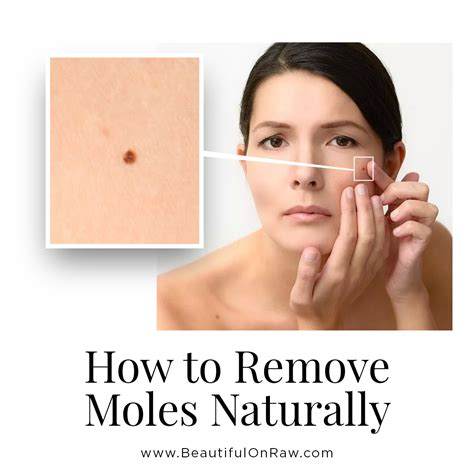The presence of moles on the skin can be a source of concern for many individuals, whether due to aesthetic reasons or health worries. Moles, also known as nevi, are growths on the skin that are usually pigmented and can appear anywhere on the body. They are typically harmless but can be unsightly or, in rare cases, may develop into melanoma, a type of skin cancer. The removal of moles, therefore, is a common procedure that can be done for both cosmetic and medical reasons.
Understanding Moles
Before considering removal, it’s essential to understand what moles are. Moles are clusters of pigment-producing cells called melanocytes. They can be flat or raised, and their color can range from pink to black. Most individuals have between 10 to 40 moles, which typically appear by the age of 40. Moles can change over time due to hormonal changes, sun exposure, or the natural aging process.
Reasons for Removal
There are several reasons why someone might want to remove a mole. For some, it might be due to aesthetic concerns, such as a mole being in a visible place like the face or neck. For others, removal might be considered due to discomfort, such as a mole catching on clothing or jewelry. Health concerns, specifically the suspicion of melanoma, are also a significant reason for removal. Any mole that changes in size, shape, color, or elevates above the skin’s surface should be evaluated by a healthcare professional.
Methods of Mole Removal
Several methods can remove moles, each with its own set of indications, benefits, and potential drawbacks.
1. Surgical Excision
This is the most common method for removing moles that are potentially cancerous or are large. It involves numbing the area with local anesthesia and then surgically cutting out the mole and a small margin of skin around it. The incision is typically closed with stitches. This method can leave a scar, but the surgeon often uses techniques to minimize its appearance.
2. Shave Removal
For moles that are raised above the skin, a shave removal might be recommended. This procedure also involves numbing the area and then using a small, sharp blade to shave the mole off at the skin’s surface. This method is less likely to leave a noticeable scar compared to surgical excision but might not be suitable for all types of moles, especially if there’s a suspicion of cancer.
3. Laser Removal
Laser removal is another option, particularly for smaller moles. It uses a beam of light to break up the pigment in the mole. This method may require multiple sessions to completely remove the mole. It’s a good option for those looking to minimize scarring, but the effectiveness can vary, and it might not be suitable for all skin types.
Precautions and Aftercare
Regardless of the removal method, it’s crucial to follow the aftercare instructions provided by the healthcare professional to ensure proper healing and minimize the risk of complications. This often includes keeping the area clean, applying antibiotic ointment, and avoiding strenuous activities for a few days. It’s also essential to have any removed mole examined by a pathologist to rule out cancer, even if the mole was removed for cosmetic reasons.
Preventing New Moles
While it’s not possible to completely prevent moles from forming, reducing exposure to UV radiation from the sun and tanning beds can lower the risk of developing new moles and reduce the risk of existing moles turning into melanoma. Using sunscreen with a high SPF, wearing protective clothing, and seeking shade when the sun is strong are all effective measures.
Conclusion
The removal of moles is a common procedure that can be done for both aesthetic and health reasons. Understanding the reasons for removal, the various methods available, and the importance of proper aftercare can help individuals make informed decisions about their skin health. Whether it’s for peace of mind or to address a potential health issue, mole removal can offer relief and reassurance.
What are the common reasons for mole removal?
+The common reasons for mole removal include aesthetic concerns, discomfort, and health issues, such as the suspicion of melanoma. Moles in highly visible areas or those that change over time may prompt individuals to consider removal.
How are moles typically removed?
+Moles can be removed through surgical excision, shave removal, or laser removal. The choice of method depends on the size, depth, and location of the mole, as well as the individual’s skin type and preferences.
Is mole removal a painful procedure?
+Most mole removal procedures involve numbing the area with local anesthesia to minimize pain during the procedure. After the procedure, some discomfort or itching may occur as the area heals, but this can typically be managed with over-the-counter pain relievers.
How long does it take for the area to heal after mole removal?
+The healing time after mole removal can vary depending on the method used and the size and depth of the mole. Generally, the area may take a few weeks to fully heal, during which time it’s essential to follow the aftercare instructions provided by the healthcare professional to minimize the risk of complications and ensure the best possible outcome.
Can new moles be prevented?
+While not all moles can be prevented, reducing exposure to UV radiation from the sun and tanning beds can lower the risk of developing new moles and reduce the risk of existing moles turning into melanoma. Regular skin checks and monitoring changes in existing moles are also crucial for early detection and treatment of any potential issues.



